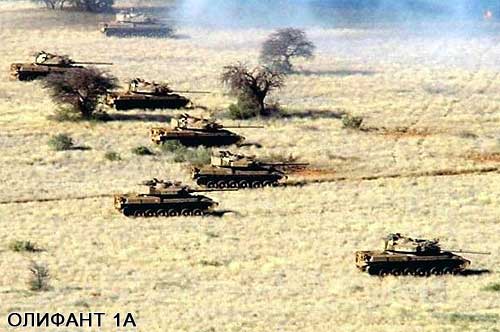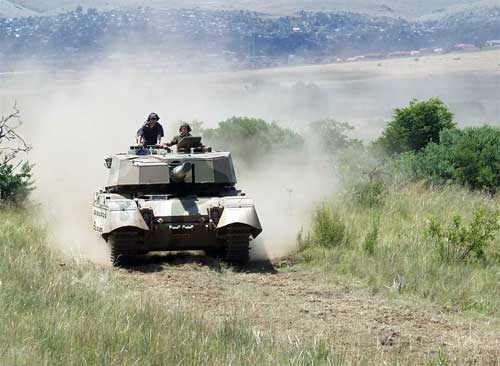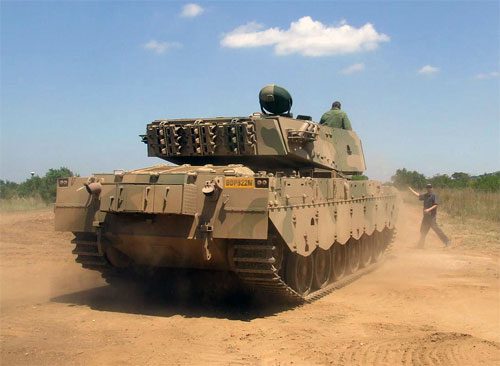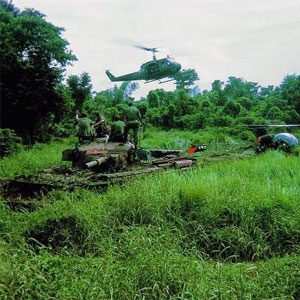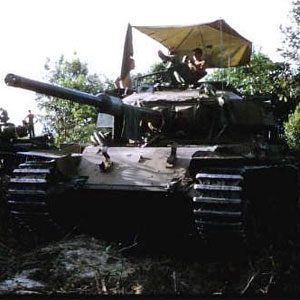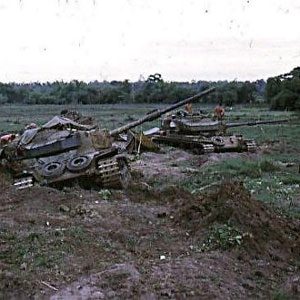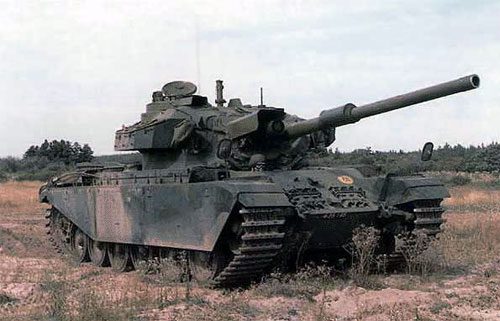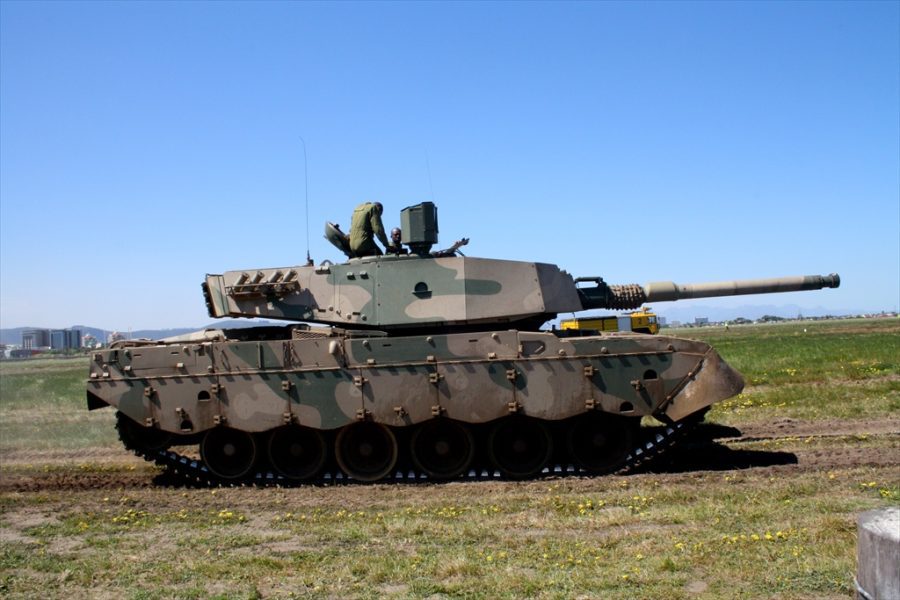
Olifant main battle tank
Content
Olifant main battle tankThe Olifant ("elephant") tank is deep
When creating the tank, the designers took the classic layout as a basis. The control compartment is located in front of the hull, the fighting compartment is in the middle, the power plant is in the stern. The gun is located in the tower of circular rotation. The crew of the tank consists of four people: commander, gunner, driver and loader. The organization of the internal space also corresponds to the most common and long-standing traditional solutions. The driver's seat is located on the right in front of the hull, and to the left of it is part of the ammunition (32 shots). The tank commander and gunner are located on the right side of the fighting compartment, the loader is on the left side.
Ammunition is stored in the turret recess (16 rounds) and in the fighting compartment (6 rounds). The main armament of the built prototype of the tank is the 105-mm rifled gun STZ, which is a development of the British cannon 17. The connection between the gun and the turret is conceived as universal, which allows the installation of 120-mm and 140-mm guns. Even a new 6T6 cannon has been developed, which makes it possible to use 120-mm and 140-mm barrels with a smooth channel.
The next gun model for the tank is the 120 mm ST9 smoothbore gun. In all cases, the barrels of the guns are covered with a heat-insulating cover. As you can see, the designers have provided a variety of options for arming the new tank, and the South African industry has sufficient potential to implement any proposals (the question of the advisability of using 140-mm guns is currently being considered).
Tactical and technical characteristics of the main battle tank "Oliphant 1V"
Tank "Centurion" of the South African armyCenturion, A41 - British medium tank. A total of 4000 Centurion tanks were built. During the fighting in Korea, India, Saudi Arabia, Vietnam, the Middle East, and especially in the Suez Canal zone, the Centurion proved to be one of the best tanks of the post-war period. The Centurion tank was created as a vehicle that combines the properties of cruising and infantry tanks and is capable of performing all the main tasks assigned to armored forces. Unlike previous British tanks, this vehicle had significantly enhanced and improved armament, as well as improved armor protection.
Tank Centurion Mk. 3, at the Canadian Museum However, due to the very spacious layout, the tank's weight turned out to be too large for this type of vehicles. This drawback significantly limited the mobility of the tank and did not allow for a sufficiently strong reservation.
The first samples of the Centurion tanks appeared in 1945, and already in 1947 the main modification of the Centurion Mk 3 with a 20-pounder 83,8-mm cannon was put into service. Other modifications of that time differed as follows: a welded turret with a twin system of 1 mm and 76,2 mm guns was installed on the Mk 20; on the Mk 2 sample - a cast turret with a 76,2 mm gun; the Mk 4 has the same turret as the Mk 2, but with a 95mm howitzer. All these samples were produced in limited quantities and subsequently some of them were converted into auxiliary vehicles, and the other part was upgraded to the level of the Mk 3 model. In 1955, more advanced models of the Centurion tank were adopted - Mk 7, Mk 8 and Mk 9 , In 1958, a new model appeared - the "Centurion" Mk 10, armed with a 105-mm cannon. According to the new English classification, the Centurion tanks were classified as medium-gun tanks.
"Centurion" Mk 13 The welded hull of the Centurion Mk 3 tank was made of rolled steel with a reasonable inclination of the nose armor plates. The side plates of the hull were located with a slight inclination outward, which made it possible to more conveniently place the suspension removed from the hull. To support the tower, local widenings were provided. The sides of the hull were covered with armored screens. The tower was cast, with the exception of the roof, which was welded by electric welding, and was made without a rational inclination of the armored surfaces. PS It should, however, be noted that the tank presented above was in service with some other countries of the world - in particular, in the armored units of Israel. Sources:
| ||||||||||||||||||||||||||||||||||||||||||||


 Tank "Oliphant 1B" began to enter the army of South Africa in 1991. It was also planned to bring most of the Model 1A tanks to its level. The modernization of the Centurion tanks carried out in South Africa is an extremely interesting example of enhancing the combat properties of long-obsolete combat vehicles. Of course, "Oliphant 1B" cannot be equal to modern tanks, but the totality of the improvements and improvements made puts it in an advantageous position compared to other tanks that are operated on the African continent.
Tank "Oliphant 1B" began to enter the army of South Africa in 1991. It was also planned to bring most of the Model 1A tanks to its level. The modernization of the Centurion tanks carried out in South Africa is an extremely interesting example of enhancing the combat properties of long-obsolete combat vehicles. Of course, "Oliphant 1B" cannot be equal to modern tanks, but the totality of the improvements and improvements made puts it in an advantageous position compared to other tanks that are operated on the African continent.